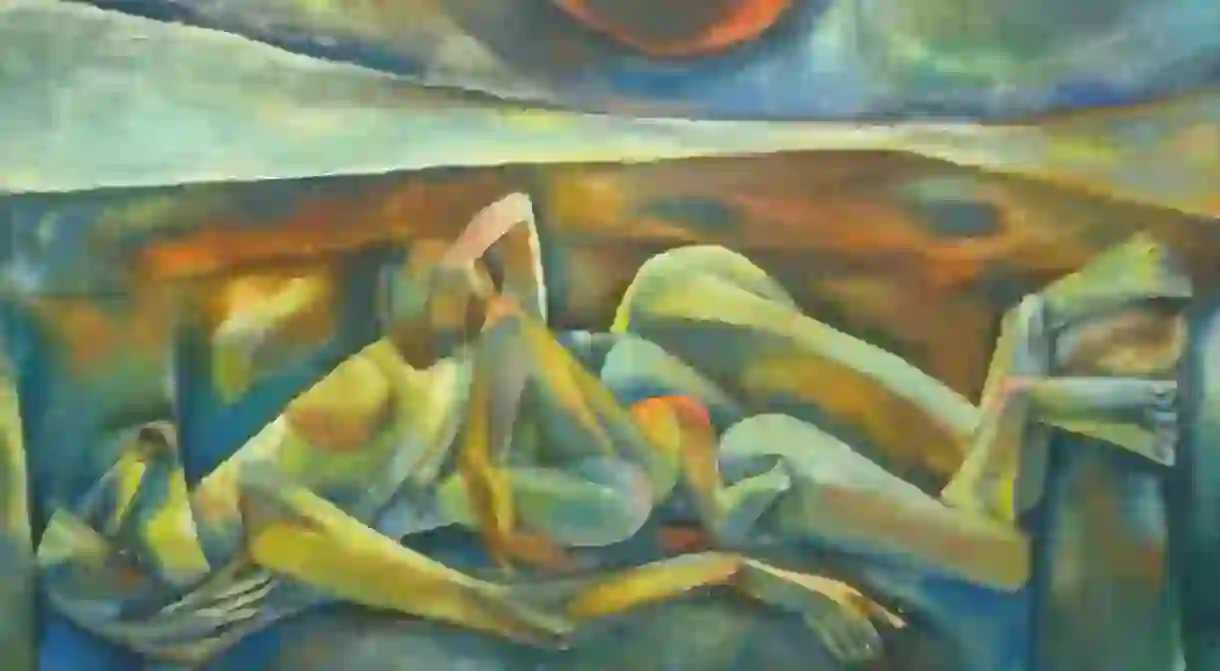The Styles and Techniques of Traditional Vietnamese Art

Vietnamese art is one of the most celebrated styles in the world. From humble clay pots created during the Stone Age to modern, eclectic installations decorating Vietnam’s biggest cities, the unique styles of Vietnamese art have thrived despite centuries of Chinese and French imperialism. Read on to discover more about traditional art in beautiful Vietnam.
Early works
Historians estimate that Vietnamese art dates as far back as 8,000 B.C., when indigenous groups living in Bac Son territory (about 160 km northeast of modern Hanoi) began forming pottery made of clay. The surviving pieces are basic and plain. Decorative “flair” did not show up in Vietnamese art works until the Bronze Age.

The artistic Dong Son culture flourished up to the 4th century and produced the famous Dong Son drums, which are elaborately decorated bronze drums that depicted daily realities of everyday life such as farming, music, and construction. These intricate pieces of Dong Son culture also prove that early Vietnamese were experts in cloth-weaving, as many preserved bronze drums depict people wearing embellished clothing.
Centuries of Chinese rule
Vietnam was invaded and subsequently ruled by the Chinese from 111 B.C. to 939 A.D. During 10 decades of imperialist rule, Vietnamese art was influenced by Chinese techniques. Under Chinese rule, Vietnamese artists began to practice calligraphy, painting, and poetry, and created works out of porcelain, lacquer and terracotta. Poetry-inspired paintings largely depicted landscapes, birds, and mountains, and usually incorporated calligraphy – all hallmarks of ancient Chinese works.

Independence and the Ngo-Tran dynasties
Vietnam fought for and achieved independence from China in the 10th century. Under the ruling Ngo-Tran dynasties from the 10th-15th centuries, respectively, Vietnamese art thrived. Vietnamese paintings, pottery and poetry were all influenced by adapted Chinese philosophies. The 11th century is considered to be the golden age of Vietnamese art. Under the Ly dynasty, artists created beautiful ceramics that were desired across the whole of Asia. This specific century also witnessed the creation of many traditional landmarks, such as the regal Temple of Literature in modern-day Hanoi.

Fourth Chinese invasion
China again invaded and ruled Vietnam in the 15th century. This short but brutal rule in Vietnam saw many classical Vietnamese books and artworks burnt, resulting in a tragic loss of documentation from this and past eras. Unlike the previous ruling, in which Vietnamese artists still produced native works, art created during this period (1407-1427) was heavily influenced by the Ming dynasty. After the Vietnamese regained control of their country, the remaining Vietnamese dynasties oversaw a renewed interest in porcelain and ceramics. From the late 15th to 19th centuries, Vietnamese ceramics were imported across Asia to be displayed in royal courts.
French imperialism and contemporary works
Vietnam once again fell prey to the hungry eyes of imperialist nations as the French descended into Vietnam during the 19th century. They established schools in the big cities to teach European art methods and as a result French art influence was mostly concentrated in Hanoi and Saigon. Vietnamese artists began to use traditional mediums such as silk, lacquer, and oil to create European-style artworks. The result was a dazzling fusion of East and West, with talented artists creating breathtaking silk and oil paintings usually depicting pagodas, the countryside, and Vietnamese historical events. The French imposed harsh travel restrictions on the Vietnamese, and consequently only artists from rich families could afford to travel to France to advance their careers. Artists who did go abroad include the famous Le Thi Luu, Le Pho, Mai Trung Thu, and Pham Tang.

Craig Thomas, founder of Craig Thomas Gallery in Ho Chi Minh City, talked to Culture Trip about the revival of traditional art techniques in Vietnam. “The most obvious example [of the fusion of modern/traditional] is the revival of water color on silk painting in Vietnam that has taken place over the last decade. This traditional medium had largely fallen into irrelevance and cliche but has recently been reinvigorated by artists like Le Thuy, Bui Tien Tuan, Chau Giang and many others”. He also discussed with Culture Trip about how modern artists use their work to address social and political issues. “Corruption is a theme that certain artists have chosen to make a focus of their work”, he explained. “There are lines – not always clearly defined but definitely existing and respected – that the artists know have to be worked with in if they want their work to be shown publicly without issue.”
Vietnamese art has thrived despite its turbulent history, maintaining a uniqueness that has put local artists on the international stage. The artistic talent blooming from this dynamic country is colourful and boundless, and should not be missed by anyone visiting.













